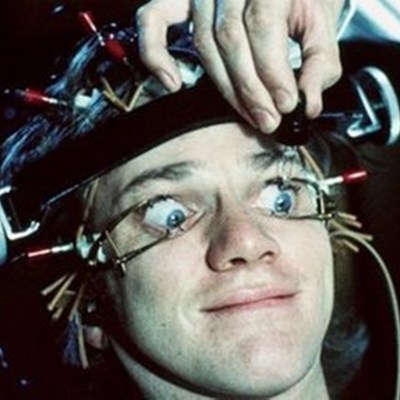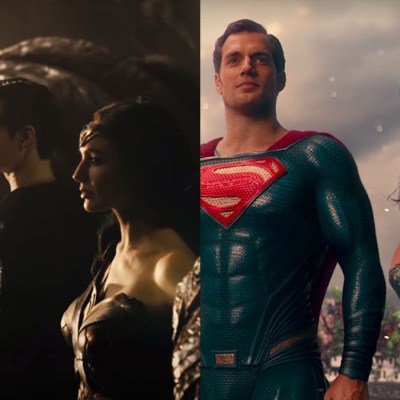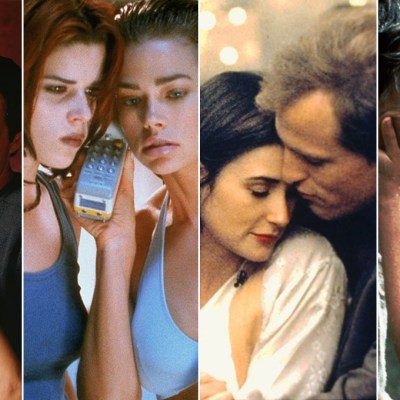The Most Controversial Movies Streaming Right Now
We look at the 10 most controversial movies ever to hit the big screen, and which are now available for you to stream from the (dis)comfort of your own home.
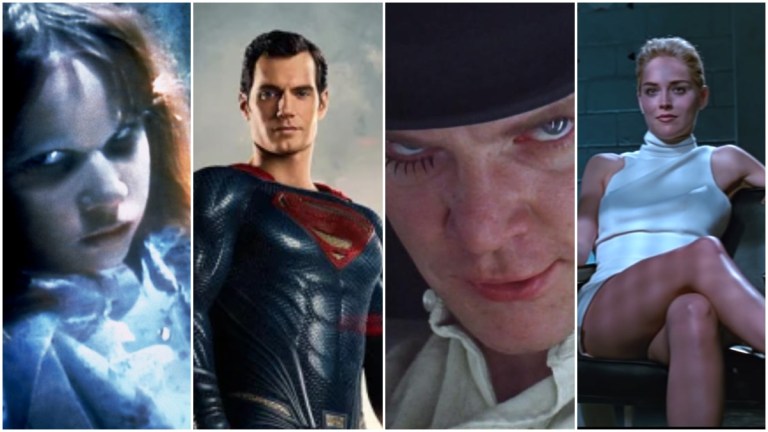
Are you looking for a light and breezy flick to stream at home? Well, you may want to look elsewhere. The movies we’ve compiled below test the merits of the phrase “all publicity is good publicity.” Whether controversial due to violent or explicit content, on-set occurrences, or tackling weighty topics like race or religion, the following films were lightning rods for conversation around the time of their release, sometimes overshadowing the quality of the films themselves.
Thankfully, all of these disputed movies are readily available to modern audiences right now, allowing us to see whether all of the hubbub surrounding these films was warranted. They’re also a great litmus test for determining how our standards for “decency” have warped, shifted, or stayed the same in the ensuing years. Without further ado, here are the 10 most controversial movies now available for streaming.
[Trigger Warning: This article makes references to acts of sexual assault, both fictional and real.]

Bonnie and Clyde (1967)
HBO Max
While modern audiences have been desensitized to depictions of violence on-screen, and the true crime genre’s popularity has made the exploration of murderers commonplace, 1967’s Bonnie and Clyde, starring Warren Beatty and Faye Dunway as the infamous Depression-era partners in crime, was shocking for its time due to its apparent glorification of murderers and unprecdeneted level of graphic violence.
Bosley Crowther of The New York Times wrote, “It is a cheap piece of bald-faced slapstick comedy that treats the hideous depredations of that sleazy, moronic pair as though they were as full of fun and frolic as the jazz-age cutups in Thoroughly Modern Millie.” Subsequent write-ups of the film suggested that the movie opened the floodgates to heightened graphic violence in cinema and TV.
Still, audiences flocked to the movie, so much so that the Times fired Crowther because his review seemed so out-of-step with audience reactions. Though it had many detractors, it also had many champions. Roger Ebert gave the film four out of four stars, writing that the picture was “a milestone in the history of American movies, a work of truth and brilliance.” Whether the film’s impact was positive or negative, Bonnie and Clyde undoubtedly changed the course of American cinema.

A Clockwork Orange (1971)
HBO Max
Stanley Kubrick’s adaptation of Anthony Burgess’ dystopian crime novel of the same name tested audiences’ limits for violence when it was released in 1971. The film follows a charismatic and sociopathic teenager, Malcolm McDowell’s Alex, as he leads a violent gang of Droogs to commit acts of physical and sexual violence. The film’s most grotesque and unsettling scene sees Alex rape a woman while singing “Singin’ in the Rain.”
Once Alex is picked up by police, he undergoes an experimental conditioning technique to rid him of his violent tendencies. Upon theatrical release in the United States, the National Catholic Office for Motion Pictures forbade Roman Catholics from viewing the film. The UK government took even more extreme action. After several knife related crimes occurred, which were supposedly inspired by the film, the movie was withdrawn from British release in 1973 by Warner Bros. at the request of Stanley Kubrick.
In response, Kubrick said, “To try and fasten any responsibility on art as the cause of life seems to me to put the case the wrong way around. Art consists of reshaping life, but it does not create life, nor cause life. Furthermore, to attribute powerful suggestive qualities to a film is at odds with the scientifically accepted view that, even after deep hypnosis in a posthypnotic state, people cannot be made to do things which are at odds with their natures.”
The film remained difficult to see in the UK until Kubrick’s death in 1999. Afterward, the movie was theatrically re-released and made available on VHS and DVD.
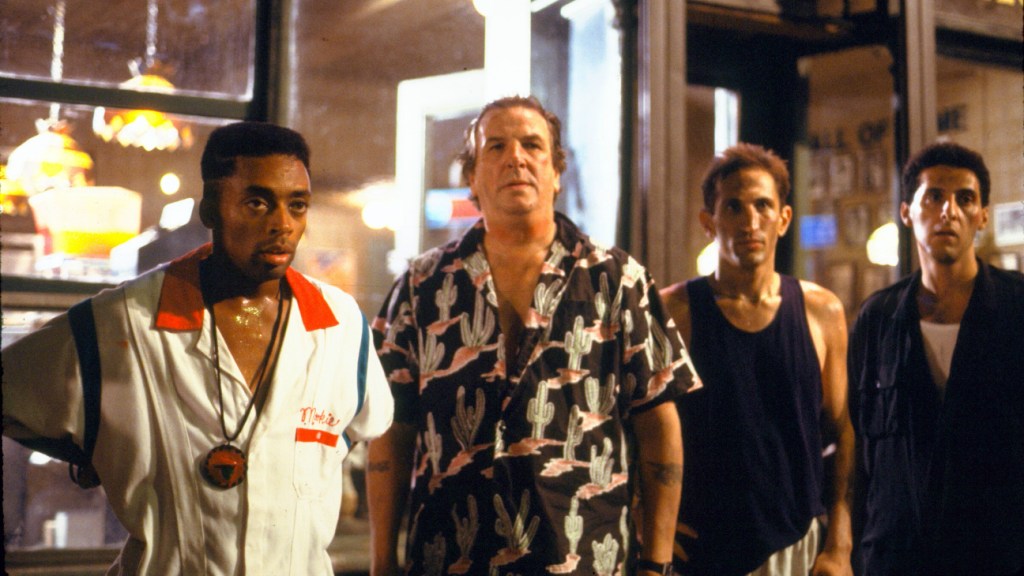
Do the Right Thing (1989)
HBO Max
Spike Lee’s 1989 semi-autobiographical drama about Bed-Stuy race relations was a major step forward for Black cinema, but the film did not come without its controversy. In the movie, protagonist Mookie, played by Lee, ends the film by throwing a trash can through a store-front window after the wrongful death of neighborhood hero Radio Raheem (Bill Nunn), which then incites a riot.
Many film scholars interpreted the move as Mookie’s attempt to divert the anger and violence away from white pizza parlor owner Sal (Danny Aiello) and toward his property. Still, other critics suggested that the film would inspire Black audiences to riot themselves, an assertion that Lee found both racist and ridiculous.
“I don’t remember people saying people were going to come out of theaters killing people after they watched Arnold Schwarzenegger films,” the director said. Lee believes the key point is that Mookie was angry at the wrongful death of Radio Raheem, stating that viewers who question the riot are explicitly failing to see the difference between damage to property and the death of a Black man. The conversations that Do the Right Thing started have only sadly continued in the present day, as police brutality and subsequent local reactions continue the debate of protests and the potential of riots.

The Exorcist (1973)
HBO Max, Tubi
Obviously religious groups were going to take issue with William Friedkin’s The Exorcist, which centers on the demonic possession of a young girl and a priest’s attempt to rescue her through exorcism. However, a majority of the controversy surrounding this film came due to the film’s rating.
Many critics and parental groups suggested that the film was wrongly given an R-rating, which would allow children to attend the film with the accompaniment of a parent or guardian, and believed that the film should have received an X-rating, which would have forbid minors from attending screenings. There were many claims that the MPAA ratings board had accommodated Warner Bros. by giving the film an R-rating instead of the X-rating they thought it deserved, in order to ensure its commercial success.
Reactions to the film were so visceral that there were many reports of audience members vomiting, fainting, and even some experiencing heart attacks and a miscarriage. One psychiatric journal of the time published a paper on “cinematic neurosis” triggered by the film. Meanwhile many religious groups saw merit in a film that so earnestly (and frighteningly) depicted the battle between good and evil. Others, however, were still horrified by the film’s subject matter. Evangelist Billy Graham gave a 20-minute sermon in 1974 that concluded an ancient demonic force was living within “the fabric” of the film prints.
But problems with The Exorcist didn’t just start when the film was released. While in production, a fire destroyed the majority of the set, and stars Linda Blair and Ellen Burstyn suffered long-term injuries in on-set accidents. Things got so bad that Friedkin brought in a priest to bless the “cursed” project. Perhaps all of this hysteria around the film is part of the reason why the movie still feels so scary and dangerous to this day.

Life of Brian (1979)
Netflix
The only faster way to draw the ire of religious groups than putting sex or violence in your film is to mock religion outright. The Monty Python crew usually took the piss out of British aristocracy and social mores but when they set their sights on religious zealots with Life of Brian, the backlash was far wider than anything they had experienced.
Life of Brian centers on Brian Cohen, a Jewish-Roman born next door and on the same day as Jesus, who is subsequently mistaken for the Messiah. The film was shunned by the BBC and ITV, who declined to show it for fear of offending Christians in the UK, and was widely picketed in the United States.
Most of the controversy centered on the film’s ending, where Brian is crucified and he and his fellow sufferers break out into song. Many interpreted it to be mocking the plight and sacrifice of Jesus. Terry Jones, the director, responded to the criticism by saying, “Any religion that makes a form of torture into an icon that they worship seems to me a pretty sick sort of religion, quite honestly.”
Still, some religious figures have come to the defense of the film, believing that it rightfully calls out the hypocrisy and idiocy that can affect religion. In February 2007, the Church of St. Thomas the Martyr in Newcastle upon Tyne held a public screening in the church itself, with song-sheets, organ accompaniment, and stewards in costume.

Justice League (2017)
HBO Max
The drama surrounding Zack Snyder’s Justice League, or more fittingly, Joss Whedon’s Justice League, has been well-documented and discussed on this site. To summarize, once Zack Snyder was forced to leave the production due to the suicide of his daughter, script doctor Whedon was brought on to finish the film. Whedon’s vision for the picture widely differed from Snyder’s, with Whedon altering the tone, dialogue, and even complete character arcs. On the set, tensions rose to the point of Whedon reportedly threatening star Gal Gadot’s career and the treatment of co-star Ray Fischer was reportedly so inappropriate that the actor threatened legal action against WB. Ben Affleck has recently said it was the most miserable moviemaking experience of his career.
When the Whedon-altered version was released, it was bashed by critics and seen as commercially disappointing. The reception of the film contributed to WB’s decision to abandon Snyder’s plans for a multi-film arc, despite vocal fan protestations. A groundswell of fan campaigns demanding to see Snyder’s original vision for the project led to the eventual release of Zack Snyder’s Justice League on HBO Max, though there are no further plans to continue Snyder’s vision for the DC Extended Universe.
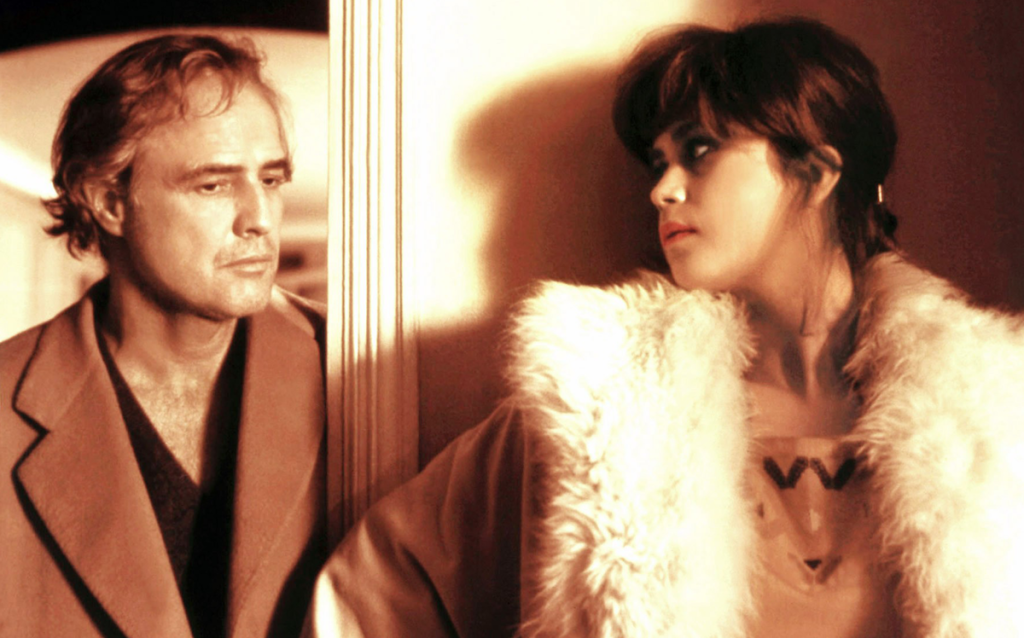
Last Tango in Paris (1972)
Pluto TV, Tubi
After watching Bernardo Bertolucci’s relationship psychodrama at the New York Film Festival, influential critic Pauline Kael prophetically wrote, “This is a movie people will be arguing about, I think, for as long as there are movies.” Fifty years later, Kael is still correct.
Marlon Brando stars as a widower mourning his wife’s suicide when he crosses paths with a young Persian woman played by Maria Schneider. They begin an “anonymous” sexual relationship, before things take a possessive and violent turn. The film received an “X’ rating in the U.S., but faced wider International scrutiny. In Italy, police seized all copies of the film on the order of a prosecutor who defined the film as “self-serving pornography.” Bertolucci was also put on trial for obscenity. The trial went on until 1976 when the Italian courts ruled that all copies of the film must be destroyed and that Bertolucci must serve a four-month suspended sentence in prison, which saw his civil rights revoked for five years, depriving him of voting rights.
The film’s scandal centered mostly on an anal rape scene, featuring the use of butter as a lubricant. The scene was heavily altered by Brando, who encouraged the use of butter at the last minute. Schneider was 19 years old when the scene was shot, and later recounted the following in 2007:
“They only told me about it before we had to film the scene and I was so angry. I should have called my agent or had my lawyer come to the set, because you can’t force someone to do something that [when it] isn’t in the script, but at the time, I didn’t know that. Marlon said to me: ‘Maria, don’t worry, it’s just a movie,’ but during the scene, even though what Marlon was doing wasn’t real, I was crying real tears. I felt humiliated and to be honest, I felt a little raped, both by Marlon and by Bertolucci. After the scene, Marlon didn’t console me or apologize. Thankfully, there was just one take.”
While Schneider and Brando maintained a friendship until Brando’s death in 2004, Schneider kept a contentious relationship with Bertolucci and the two never reconciled. In 2013, Bertolucci remained steadfast that the scene was in the script, but that Brando added the butter element. He stated, “I feel guilty, but I don’t regret it.”
While controversial and ethically even more than dubious, the film is still regarded as some of Brando’s finest work.
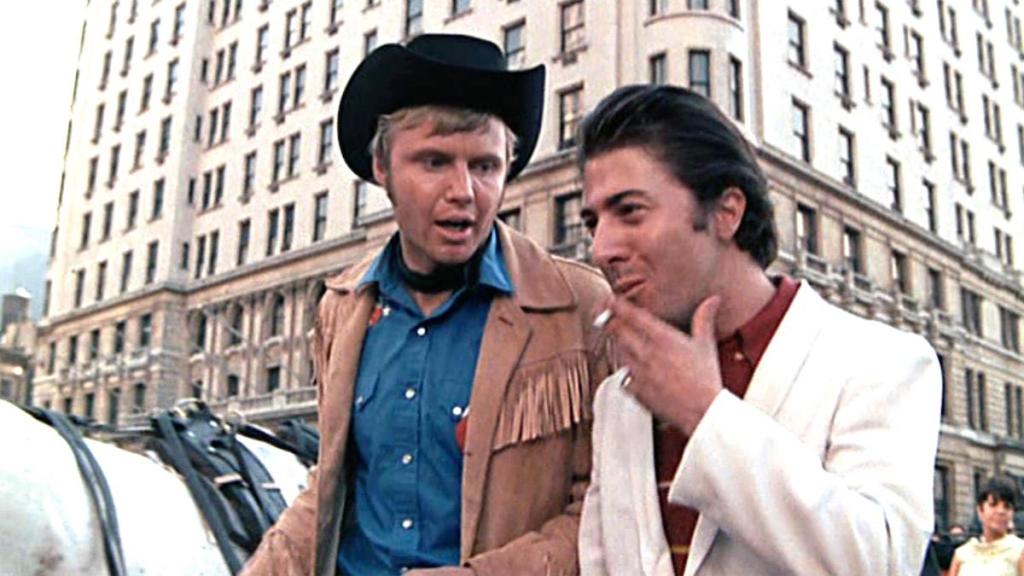
Midnight Cowboy (1969)
Showtime
John Schlesinger’s gritty depiction of New York City in 1969’s Midnight Cowboy left suburban audiences clutching their pearls. Still, the film became the only X-rated movie to ever win Best Picture at the Academy Awards. The controversy around this film’s rating seemed to come from depictions of drug use and prostitution, as well as overt references about male homosexuality, which seem quaint when viewed through a modern lens.
Despite some outrage from moral watchdog groups, Midnight Cowboy was a financial and critical success that helped launch the career of star Jon Voight and solidify the leading man status of Dustin Hoffman. What was once shocking in 1969 now just plays like a solid, slice-of-life exploration of lowlife NYC characters.

Dirty Harry (1971)
HBO Max
Recent high profiled instances of police brutality have led to media critics examining the depiction of police in popular culture, but it’s a conversation that has been ongoing since 1971 and the release of Don Siegel’s Dirty Harry. That movie centers on homicide inspector Harry Callahan (an iconic Clint Eastwood) and his no-nonsense, hard, violent approach to interrogating witnesses and apprehending murderers. But while some view the character as an aspirational badass who knows his way around a big gun and a solid quip, others saw the character as a glorification of excessive force and dangerous vigilantism.
Dirty Harry sparked conversations around issues ranging from police brutality to victims’ rights and the nature of law enforcement, and while many critics praised the film and the filmmakers, they also took issue with the film’s “fascist” message. The movie also inspired real-life kidnapping cases that mirrored the actions of the film’s villain, Scorpio. Unlike Midnight Cowboy, it’s interesting to see how the content of Dirty Harry still inspires fierce debate.
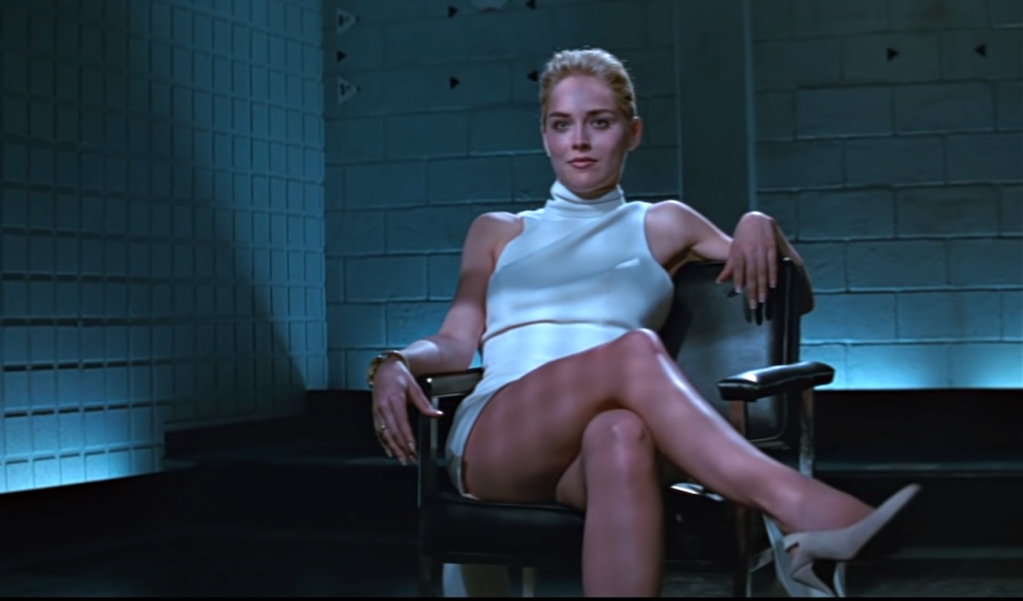
Basic Instinct (1992)
HBO Max
Paul Verhoeven is a Hollywood provocateur of the highest order, and his film Basic Instinct doesn’t buck the trend of his films inspiring outcry. Centering on the investigation of a series of murders that point toward bisexual crime novelist Catherine Tramell (Sharon Stone), the film was controversial not just because of its hypersexuality and nudity, including a shot in the infamous intergoation scene that Stone has since said was filmed without her consent, but also because of its harmful perpatuation of negative LGBTQ sterotypes.
Gay rights activists criticized the film’s depiction of homosexual relationships and the portrayal of a bisexual woman as a murderous psychopath. Critic Roger Ebert addressed the viewpoint in his reivew, saying, “As for the allegedly offensive homosexual characters: The movie’s protesters might take note of the fact that this film’s heterosexuals, starting with [Michael] Douglas, are equally offensive. Still, there is a point to be made about Hollywood’s unremitting insistence on typecasting homosexuals—particularly lesbians—as twisted and evil.”
Needless to say, lesbian and bisexual activist group LABIA protested the film, picketing outside several screening in theaters across the country.

